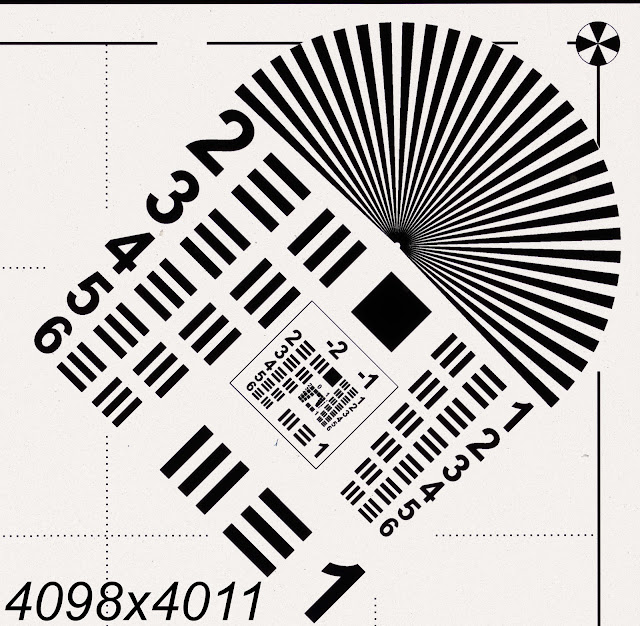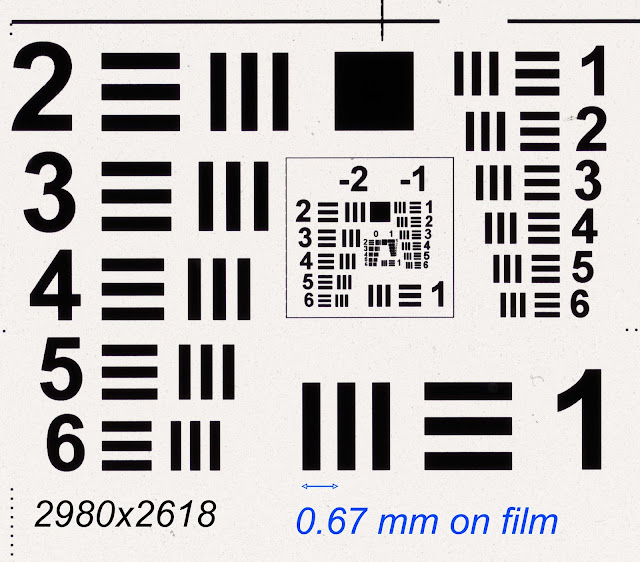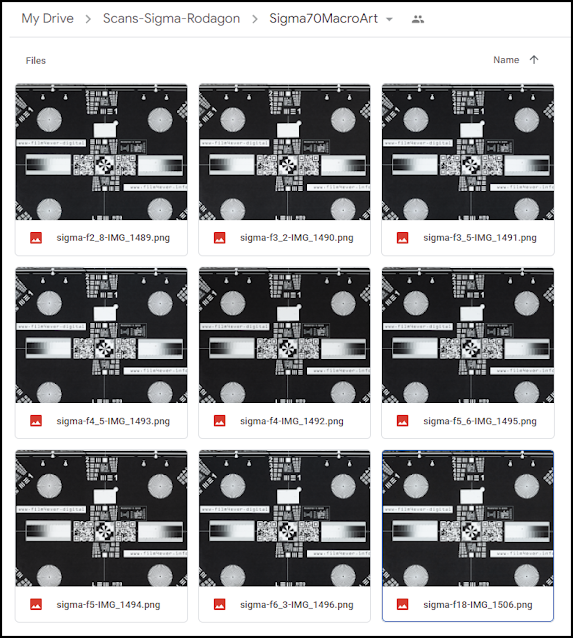Type 120 Positive Test Target PO69
Here is more details on new Type 120 Positive Test Target PO69. This is exact reversal of the Negative Test Target NG69.
The note from Vlad:
The reasons why I started offering the Positive Test Targets are as follows. Everyone who used negative targets while viewing images in the digital camera have encountered the strong hallo around target's bars and stars. That's because camera sensor averages the brightness of the scene and sets certain exposure values. Given that most of the image is almost black (in case of negative) the camera brings brightness up until black areas look gray. That means that transparent areas with bars and numbers are getting overexposed (they basically end up being in Zone 0) . That forces operator to manually step down camera to avoid those overexposures . Still the halos remain the issue and interfere with the focusing.
With positive targets the issue will go away - the sensor reads mostly transparent areas, the averaging will lead to whites being rendered gray - and black bars will be black without hallo around them.
I would say the issues above are the matter of personal preferences as for the long time majority of folks insisted that negative targets are still better suited to the end goal. I decided to provide the choice and test the theory in practice.
The film target looks like below. Note these are all the actual hi-resolution scans of the real film target. The have been produced by Dominique Ventzke at www.high-end-scans.de and are shown here with his permission.


Let me conclude that those targets should work beautifully for film/sensor alignment and will help assess variations in sharpness due to the factors unrelated to the film itself.
The original scan size is hopping 38,866 x15,058 pixels ( The 650 MB TIFF file size is for 8 bit/channel with LZW compression which depends on the image content. Uncompressed 16 bit/channel TIFF is 3.27 GB.)
Anyway, let's assess how good the test target is for the fine-tuning of the scanning rigs. First of all let's note the sharpness and contrast from the edge to the center to the edge. Here are few crops with the actual size of the crop in pixels shown as WWWxHHH.
Here is the Resolution Power Chart numbers. I personally do not pay much attention to those numbers. Note that due to the size of targets the resolution on film itself is limited to something like Element 0 Group 2 - 27 lp/mm. In real life the resolution of modern camera lenses will allow to capture images from film at about 60 lp/mm like it is demonstrated by Vlads 35 mm Test Target. Though for medium format film the scan file sizes will be reaching 100s of MB putting high demands on the user's workstation. But what we are interested here is mostly various graphic elements like Siemens stars which help control the focus across the frame.

The below pictures illustrates the resolution measurement. Just note that down on the film itself the shown distance between left edges of the bars for Group -4 element 1 is 0.67mm , which corresponds to resolution of 1.5 lane pairs per mm (lp/mm).
This is how the inner part off USAF 1951 chart looks like on film at very high resolution Dominique is able to achieve.

Let me conclude that those targets should work beautifully for film/sensor alignment and will help assess variations in sharpness due to the factors unrelated to the film itself.
For the reference, here is the comparison of three targets made in new and legacy ways. The magnification is the same so resolution data can be used across those three types interchangeably.








Comments
Post a Comment